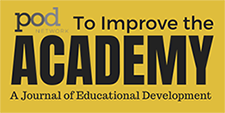Professional and Organizational Development Network in Higher Education

To Improve the Academy: A Journal of Educational Development
On the Other Side of the Wall: The Miscategorization of Educational Developers in the United States?
Date of this Version
2017
Document Type
Article
Citation
To Improve the Academy: A Journal of Educational Development (2017) 36(2)
Abstract
Educational developers around the world are employed in a range of settings and under different working conditions, including academic (faculty) positions and administrative (professional staff) roles. Curiously, in a survey of 1,000 developers from 38 countries, the authors find that a full 51% of developers in the United States are on administrative contracts, while only 16% are on employed as faculty—figures that are markedly out of kilter with the overall international data. In this paper, the authors argue that the positioning of educational developers matters because of the “wall in the head”—the perceived division between faculty and staff in United States institutions; narratives of distrust along that dividing line pervade not only the higher education press but also the research, indicating the extent to which this metaphorical barrier could thwart educational developers’ attempts to enhance teaching and learning at their institutions. Ironically, this is happening at a point when universities are increasingly choosing to appoint educational developers: the miscategorization of developers’ work may be inadvertently undermining institutions’ own investment. The authors seek to explain the U.S. anomaly in positioning developers as staff by mining their international dataset, focusing on developers’ qualifications, academic experience, institutional contexts, and personal identities.
Included in
Curriculum and Instruction Commons, Higher Education Commons, Higher Education Administration Commons, Higher Education and Teaching Commons, Other Education Commons


Comments
License: CC BY-NC-ND